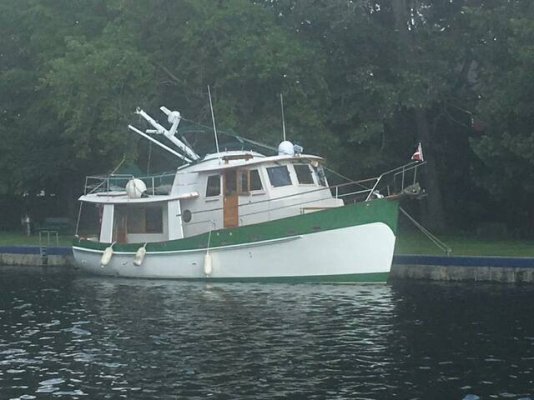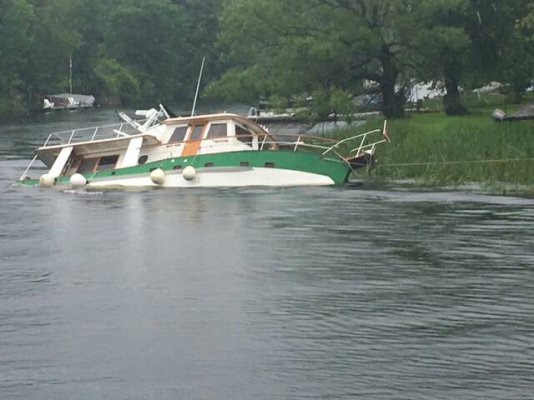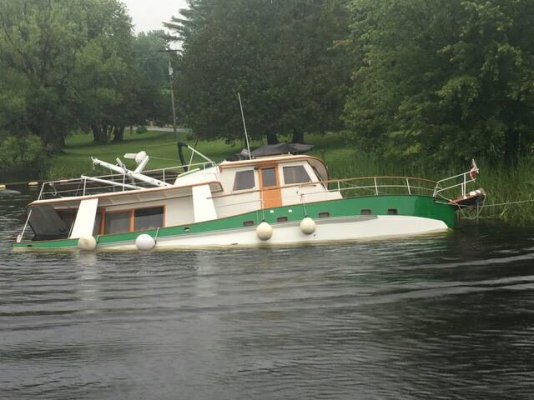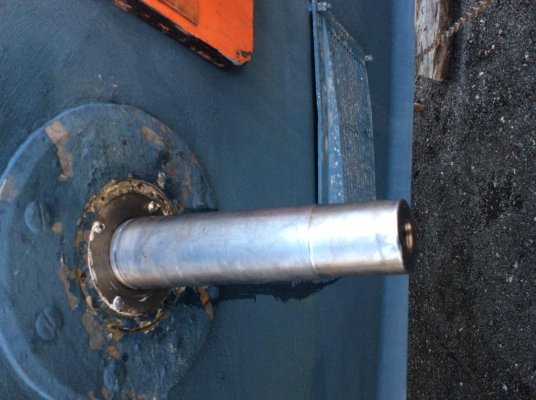Flatswing
Guru
- Joined
- Sep 21, 2016
- Messages
- 658
- Location
- United States
- Vessel Name
- River Girl
- Vessel Make
- 2004 DeFever 49 RPH
This beautiful KK 42 apparently got a little out of position in a narrow rocky channel near Lock 42 on the Trent Severn Waterway 2 days ago. I didn't witness it personally but the pics were given to me by a professional boat captain who was driving another boat travelling with them. Apparently, she tore off a stabilizer and sank within 10+ minutes. Fortunately all aboard were able to get to safety. The flow rates are high in the TSW this year and as the river /canal accelerates through narrow rock cuts, or merges with barrage dam outflows, the currents and boat reaction especially for those of us with keels can be dynamic. It's still safely navigable but one hand on the wheel with the other on the throttle(s) & highest level of concentration required in a few but fortunately predictable areas.









